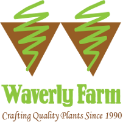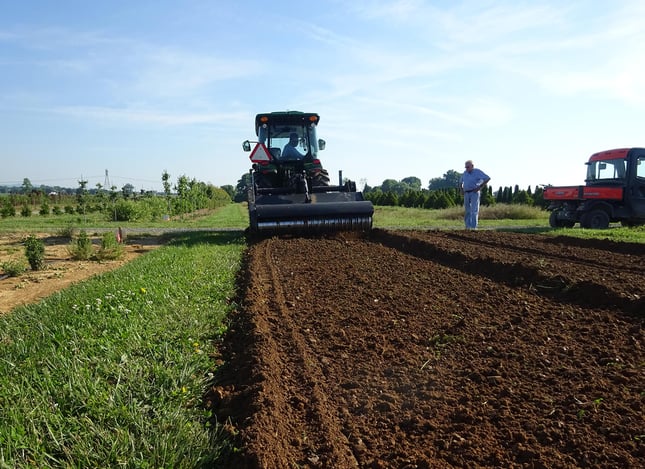Soil preparation. That’s the starting point for any field production nursery operation. The soil you've got and what you do with it to maintain or improve soil health is directly tied to your success as a grower. It is the key to growing consistently high value plant material.
In this article, we are going to take a look at how soil regeneration and tillage techniques can improve soil health and maximize the value of plants coming out of a wholesale nursery.
Different Types of Soil Favor Different Types of Plants
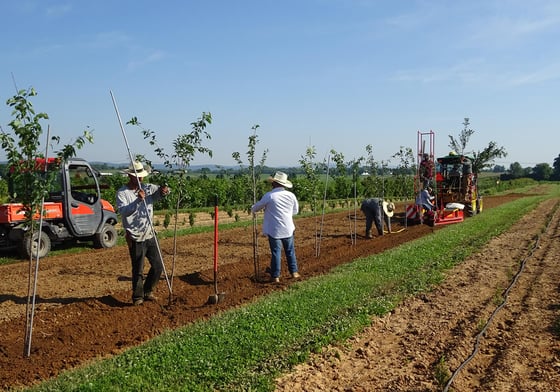 There are hundreds of different soil types. That's all been plotted through soil surveys by the USDA Natural Resources Conservation Service and posted online at the Web Soil Survey.
There are hundreds of different soil types. That's all been plotted through soil surveys by the USDA Natural Resources Conservation Service and posted online at the Web Soil Survey.
The soil types are made up of sand, silt, and clay. You know why sandy soil is a problem. It doesn't hold moisture–which makes it difficult to develop a dense root system. Also,when the soil is too sandy, it is a real challenge to dig a root ball that won’t fall apart before you can wrap it.
Heavy clay soil poses the opposite problem. Clay soils hold too much moisture for too long a time, and if they happen to dry out, they become hard like concrete. Root systems have to work overtime to muscle their way into the soil.
Almost all growers have to deal with some version of soil that’s too much of this or not enough of that.
The fortunate few have that nice balance of sand, silt, and clay that makes up loam soil. Most plants prefer a silty loam. Here at Waverly Farm we’ve got silty clay loam. That dash of clay in the mix tips our soil toward the heavier side of the scale. But in nursery production, a heavier soil is desirable because the root ball holds together a lot better when you dig and later during transport. This is the kind of soil that you’ve got to treat with respect and handle with care.
Building Soil Structure — Enriching with Organics
If you have less than perfect soil, one of the significant issues is the lack of organic matter. You can take care of that through composting and amendments and, if you've got the acreage, through rotations.
For example, there is a grower on the Eastern shore that has sandy clay soil. To improve it, they grow a high-volume cover crop that contributes a hundred tons per acre of organic matter. They mow it down and work it into the soil.
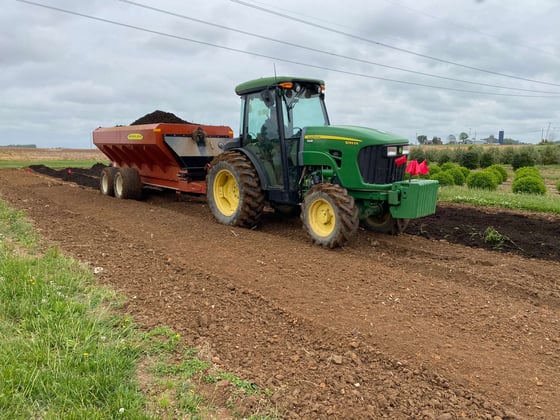 Another approach to maintaining healthy soil, if you have the acreage to spare, would be to take a portion of land out of production each year and let it rest in a five year rotation plan.
Another approach to maintaining healthy soil, if you have the acreage to spare, would be to take a portion of land out of production each year and let it rest in a five year rotation plan.
There is another way to develop healthy soil composition: Composting. Compost provides a tremendous source of organic matter to feed plants. It's broken down by microbes in the soil and eventually becomes humus. Building soil volume this way takes a long, long time and single-minded commitment. When we started here, we were 2.5% humus on average. Now we're up to nearly 3.5% percent. That may seem like nothing compared to 7% and 8% organic matter topsoils that evolved over thousands of years in the Great Plains. But even a 1% gain makes a huge difference in the quality of plant material we are able to successfully produce.
Soil Management — Preventing Erosion
The organic matter provides a sponge-like base, so water is more likely to infiltrate than to carry soil away. With normal rainfall, you will not get much runoff.
It’s also a good practice to maintain grass strips between planting rows. It gives another layer of protection that prevents soil from being lost to erosion. The grass strip absorbs rainfall much better than a hard surface or a bare surface. That’s why we have 50 acres of production land set aside for grass.
Tillage Techniques — Protecting Soil Health and Structure
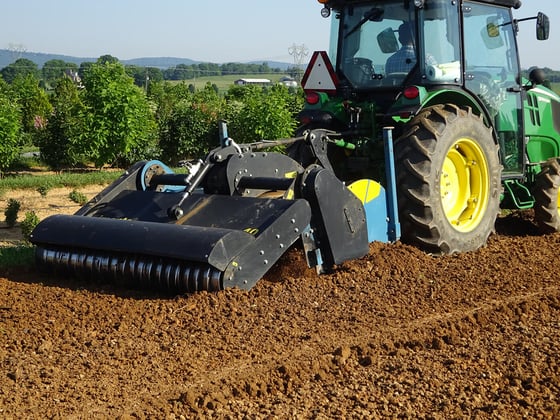 For soil preparation we take a low RPM spade plow that goes down twenty inches. The first pass levels and fills holes left behind from harvesting and incorporates surface debris into the soil. Then we apply the compost and give it one more pass with the spade plow to mix the mineral rich deep soil with the compost.
For soil preparation we take a low RPM spade plow that goes down twenty inches. The first pass levels and fills holes left behind from harvesting and incorporates surface debris into the soil. Then we apply the compost and give it one more pass with the spade plow to mix the mineral rich deep soil with the compost.
The low RPM gently cultivates the soil while maintaining the particle size. A desirable soil is made of particles, not just fine grains of sand, silt, and clay. This is called friability. Friable soils have a crumbly structure that promotes microbial activity and root growth. It is characterized by large clumps that break easily and smaller aggregates that are harder to break. If you have that kind of soil structure, you don’t want to destroy it by breaking it down into fine particles. The granulation is vital because it maintains airspace and oxygen in the soil which are essential for growth.
A forward thinking grower is going to invest in ways to “manufacture” topsoil to replace the soil lost with each plant that is sold. The goal is to avoid a decline in soil health and quality over time. If you don't do anything other than continue to plant and harvest, plant and harvest, all the rich soil you have is going to leave your nursery forever with the plants that are harvested and shipped to other locations.
Our ebook “Why Accurate Plant Pricing is Good for Everyone” will give you an additional perspective on how field production systems and techniques affect the delicate balance between price and value.
